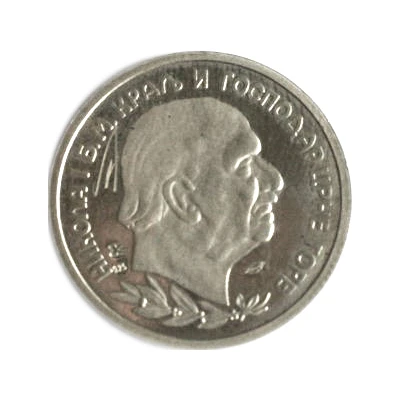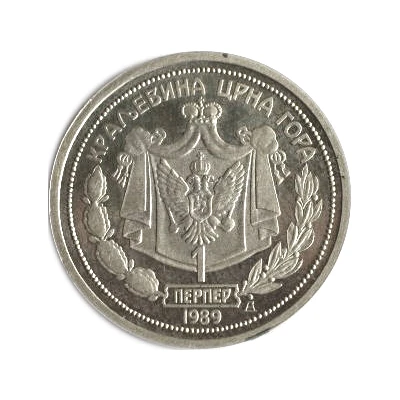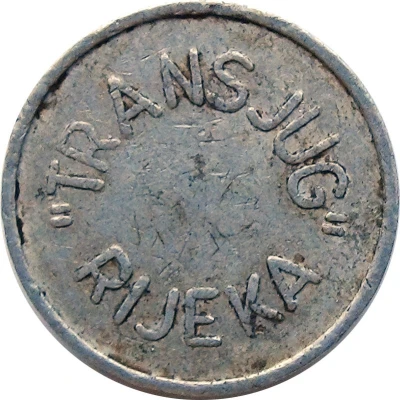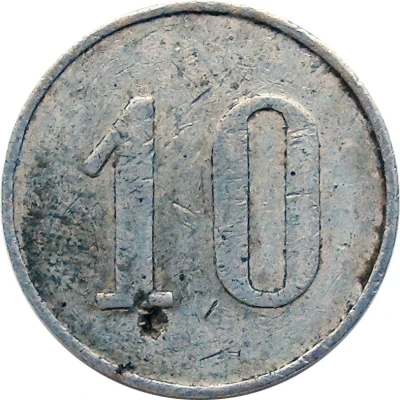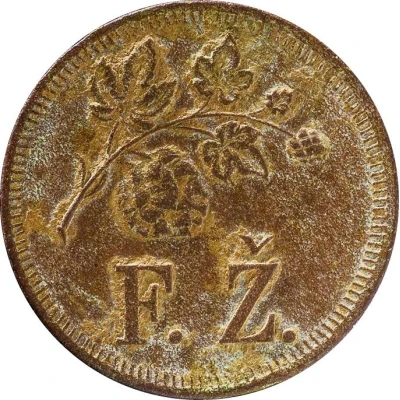
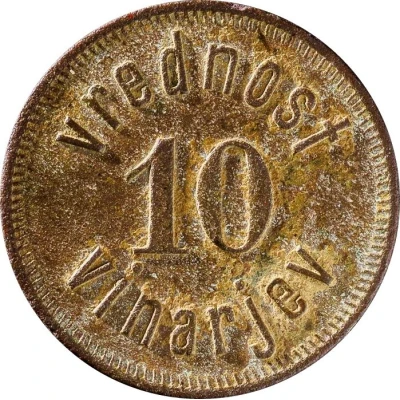

© https://stareslike.cerknica.org/
10 Vinarjev (Franjo Žagar) ND
| - | - | - |
| Location | Yugoslavia |
|---|---|
| King | Peter I (1918-1921) |
| Type | Trade tokens › Work encampment, mine and wage tokens |
| Value | 10 Vinarjev |
| Shape | Round |
| Technique | Milled |
| Demonetized | Yes |
| Updated | 2024-11-14 |
| Numista | N#354845 |
|---|---|
| Rarity index | 100% |
Reverse
Script: Latin
Lettering:
vrednost
10
Vinarjev
Translation: Value of 10 Vinars.
Comment
Pictures published by special grant from the administrator of the page https://stareslike.cerknica.org/. Text below is partially translated from the page:https://stareslike.cerknica.org/2022/09/17/1920-markovec-kovanec-franja-zagarja/
On the reverse side of the coin is written the value of ten Vinars, on the obverse side are the initials of entrepreneur Franjo Žagar, and above them is depicted a sprig of hops. There is a story about the fact that Franjo Žagar and his neighbor Margareta Schollmayer at a certain period (may be well before or around 1920) set up a joint project to grow hops. When exactly this was and if this coin was also in use from then on and what was the rest of Žagar's money, it is difficult to say without a more thorough search: it could have been in Austria-Hungary, during the time of Franjo Žagar sr. or much later; certainly during the adult years of "Countess Greta" (born on 10 June 1893 in Mašun), i.e. until the Second World War. For the cultivation of hops, the fields near the castle at the settlement of "Koča vas" were all dug up to a depth of half a meter and stones were cleaned, and Žagar built a drying room for hops on the edge of his property on the border with the neighbor. However, the venture did not work for a more or less unknown reason, most likely due to the cold climate or it was buried by some crisis. The fields were planted with another culture - after the World War II, cooperative potatoes were harvested there, and a chicken farm was built - and the abandoned hop dryer gave way to a residential building many decades later.
Franjo Žagar was not the only rich man with the use of his own money. This practice was known and spread long before, but he was the only one in the valley of "Loška dolina". Žagar was so wealthy that he could afford it and (partly?) pay his workers with his own money - money, which was a means of payment only in his store(s) with food and everyday necessities. In the settlement of "Markovac", Žagar was considered to pay workers well, certainly better than others in the area. The better he paid, the more they brought back to him - so he earned some extra money from this type of trade, not only with wood. Part of his really large property was concentrated in Markovac in one place: a sawmill, warehouses, offices, a store, apartments for workers and more. Judging by the memories from this period, apparently everything worked well to the satisfaction of the entrepreneur and the employees. What is also known about how the shop in Markovac was arranged is that, for a period after 1930 until the Second World War, merchant Alojz Mlakar from the village of "Iga vas" had his branch in Špetnak's house. The phrase "Špetnak's money" was used locally to describe Franjo Žagar's money.
